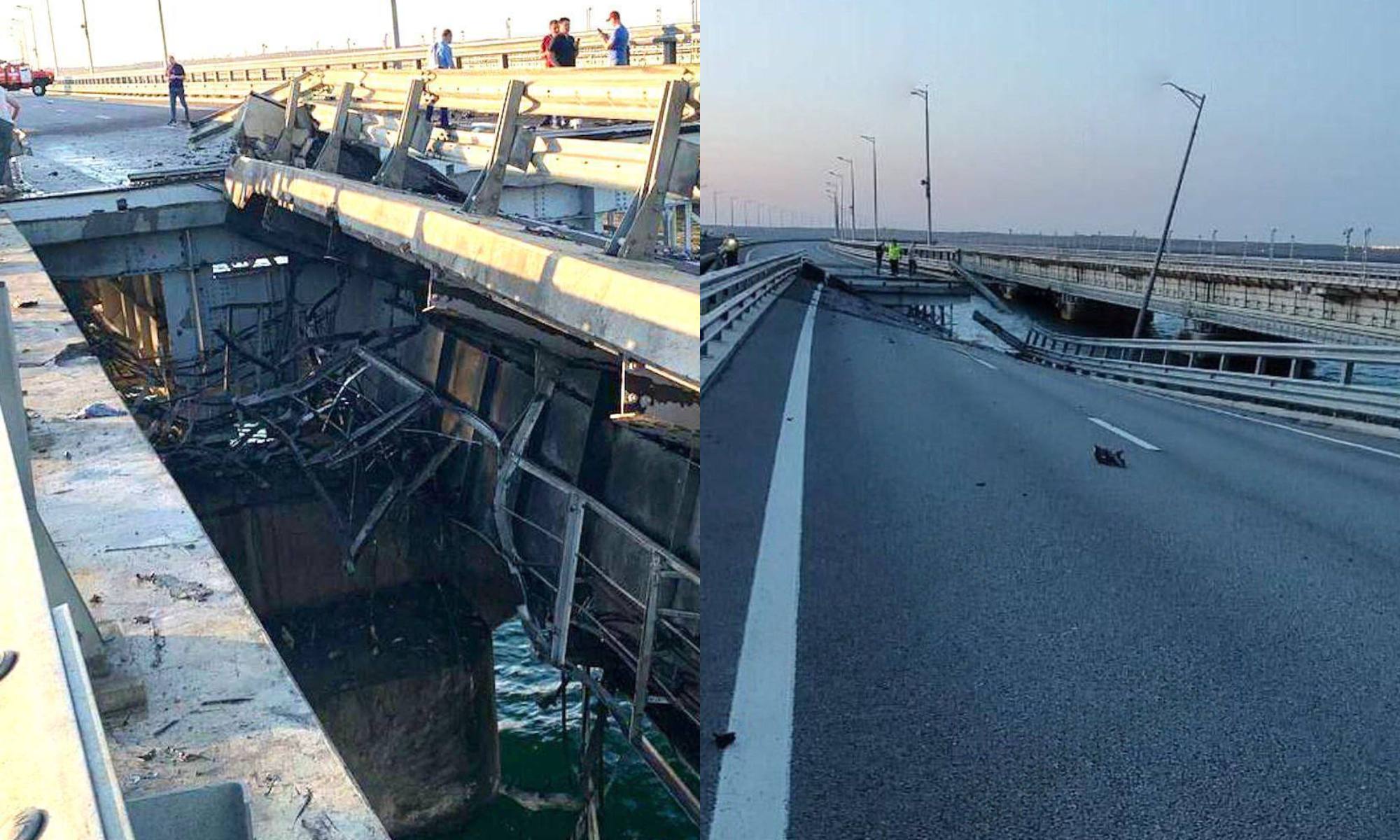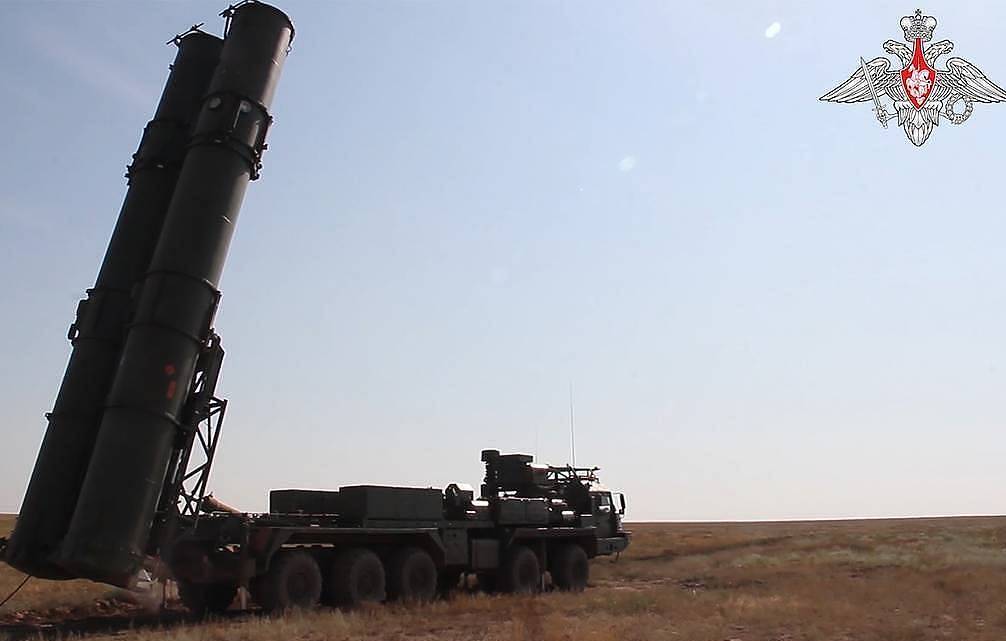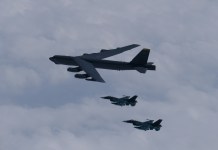Amid reports surrounding the vulnerability of Russia’s S-400 air defense system against Ukrainian missiles, Russia has moved to secure the strategic Kerch Bridge, which connects Russia to Crimea, with its latest and most capable S-500 air defense system.
Ukrainian Defense Intelligence (HUR) chief Kyrylo Budanov told Ukrainian TV broadcasters on June 12 that Russia has relocated one of its most sophisticated S-500 air defense systems to the seized Crimean Peninsula to defend the Kerch Bridge.
“We have seen the latest S-500 elements appear in [occupied Crimea],” he told the broadcaster. “This will be quite an experimental application. But they are already there.”
The strategic Kerch bridge connects the Russian mainland to the Crimean peninsula and is regularly used by Russia to transport troops and arms to Crimea. Budanov told the Ukrainian television channel, “The Kerch Bridge is always in use…; most of the cargo transported through it consists primarily of [Russian army] personnel.”
EurAsian Times could not independently verify the Ukrainian spy chief’s claim. However, if authenticated, it would be the first instance of its use in combat.
Head of the GUR Kyrylo Budanov said that Russia has placed elements of its most modern air defense system S-500 Prometheus in occupied Crimea.
"The latest elements of the S-500 have appeared. This is, in principle, an experimental application. Well, they have already appeared… pic.twitter.com/0QVzSI3gyC
— NOELREPORTS 🇪🇺 🇺🇦 (@NOELreports) June 12, 2024
Moreover, the reports of a potential deployment come weeks after the former Russian Defence Minister Sergei Shoigu announced in April that the Russian Armed Forces will receive the first batch of the highly anticipated next-generation S-500 air defense system this year.
After Budanov’s claims were published in the media, military analysts noted that Russia is likely securing the Kerch Bridge against Ukrainian attacks, given its strategic significance and vulnerability to Ukrainian attacks. The bridge has been targeted by Ukrainian forces on multiple occasions.

In August 2023, for instance, the bridge was damaged in a massive bombing, which the Russian authorities said was carried out by Ukraine with assistance from the US and the UK. The attack led to the shutdown of the bridge to all vehicular movements.
Not just that, the Ukrainian General Staff reported late last month that the Kerch area was targeted by ATACMS. As per reports and satellite images published by Kyiv, two Russian boats were hit in the strike on May 30.
Steamer "Avangard" hit in Kerch: 2-3 km from the Kerch Bridge
Last night, the Ukrainian Defense Forces hit the ferry crossing in Kerch with ATACMS missiles
As a result of the attack, two ferries serving rail and road transport were significantly damaged. One of them ran… pic.twitter.com/Y2tclX1j7V
— TOGA (@TOGAjano21) May 31, 2024
However, the S-500 deployment is likely aimed at countering broader threats. Some analysts believe that it could deter NATO from carrying out Intelligence, Surveillance, and Reconnaissance (ISR) missions.
Indian Air Force veteran and military analyst Vijainder K. Thakur says, “Operating well displaced from Russian airbases, currently US / NATO ISR assets can evade attacks by Russian fighters by moving out of range well before the fighters are in a position to launch their air to air missiles.”
Thakur further argued that “the additional range of the S–500 system will force US/NATO assets to operate about 100 km further away, reducing their ISR capability. Also, it will put the assets at risk if Russian EW impairs their navigational ability, causing them to stray within engagement range.”
However, several pro-Ukrainian military bloggers called for Ukraine to use its ATACMS to take out the system. It is noteworthy that the claimed deployment comes at a time when Ukraine has started using its long-range munitions to strike Russia, especially putting Crimea at an intensified risk. Although Russia has deployed the S-400, projected as one of the most advanced air defense systems in the world, its combat efficacy has recently come under the scanner due to its inability to thwart Ukrainian attacks.
For instance, earlier this week, Ukraine reportedly knocked out a Russian S-400 system in Crimea with the US-origin ATACMS missiles. Rybar, a well-known military blogger from Russia, claimed on June 11 that at least 12 ATACMS missiles had been fired by Ukraine on Crimea. After several such attacks that have knocked out S-400 radars or batteries, there is a growing perception that the S-400s remain vulnerable.
The S-500 AD System Is Here
The S-500, known as the Prometheus air defense system, was developed by the Almaz-Antey Air and Space Defense Corporation. It is designed to neutralize a wide range of threats at different altitudes and speeds presented by present and future aerospace technologies.
Following the successful deployment of Russia’s S-400 system in 2007, the S-500 development program was launched in 2010. The design of the system was finished in 2011, but serial manufacture has been delayed several times. The latest estimate places serial production in 2025.
Despite these setbacks, the S-500 promises to be a game-changer. It is reportedly capable of countering fifth-generation aircraft, low-orbit satellites, and a spectrum of missile threats.
It was created as a potential replacement for the A-135 anti-ballistic missile system, which is now stationed in silos outside of Moscow. Additionally, it is meant to support the long-range surface-to-air missile (SAM) system, the S-400 Triumf.
The system underwent a test in 2018, during which Russian authorities reported that it struck a target around 300 miles away.
One of the system’s standout features is its purported ability to neutralize threats across different altitudes and speeds. Additionally, its strong resistance to electronic interference increases its capacity to survive difficult combat situations and guarantees its efficacy even when confronted with advanced electronic warfare tools.
Built on the BAZ-69096 chassis, the S-500 is a road-mobile system consisting of 10×10 transporter-erector-launchers. According to information released by the Center for International and Strategic Studies, the S-500 consists of two 77N6 interceptors or four 40N6M long-range surface-to-air missiles installed atop a launch vehicle.

The system’s most significant feature is its ability to launch long-range missiles. The interceptors of the 77N6 series can achieve an even longer range—roughly 600 kilometers—than the 40N6M long-range missiles, which have an impressive 400-kilometer range.
The S-500 is equipped with a sophisticated radar complex consisting of four radar vehicles per battery. This includes the 91N6E(M) S-band acquisition radar, the 96L6-TsP C-band acquisition radar, the 76T6 multi-mode engagement radar, and the 77T6 anti-ballistic missile engagement radar.
These cutting-edge radar systems enable the S-500 to detect both ballistic and airborne targets at remarkable distances, with capabilities extending up to 2,000 kilometers for ballistic targets and 800 kilometers for airborne threats.
Its deployment aims to safeguard critical administrative and industrial hubs within Russia, bolstering national security infrastructure against airborne threats. This might put the deployment on Kerch Bridge in perspective, given that it is a very strategic logistics route for the Russian forces.
The main characteristic of the S-500 is its versatility. The system’s adaptability and effectiveness in fending off changing aerial threats are further enhanced by its capacity to deploy a variety of missiles that are suited to certain threats and operational needs.
Although Russia has not confirmed the deployment, it may well be in time if it is true, given that Ukraine has likely set its sights on Kerch to intensify pressure on Crimea.
- Contact the author at sakshi.tiwari9555 (at) gmail.com
- Follow EurAsian Times on Google News




